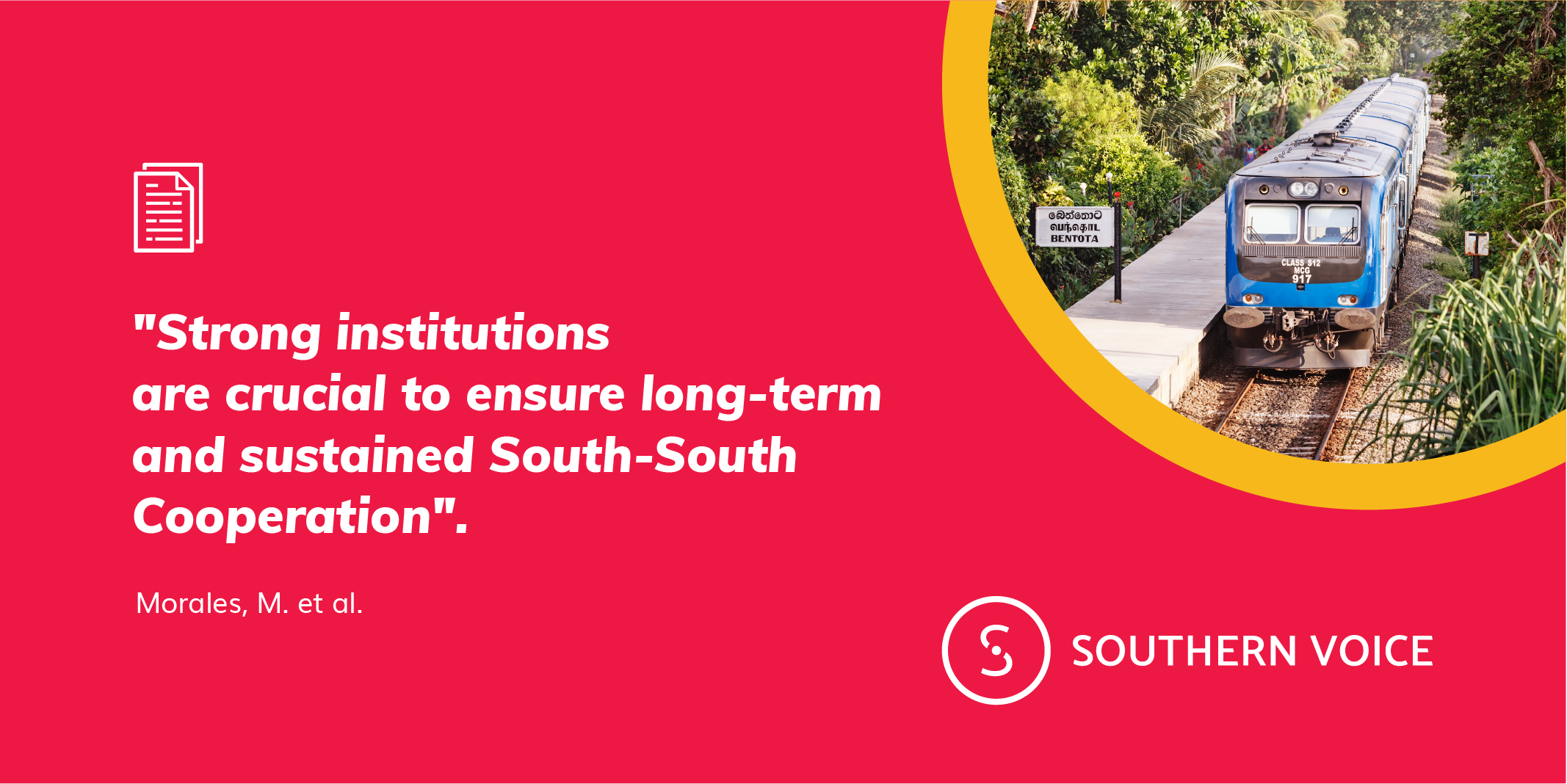Several South-South partnerships are perceived as more economical, effective and favourable compared to North-South aid relations.
During the past four decades, South-South Cooperation (SSC) has established itself in the global debate as a tool for development for the Global South. Since the adoption of BAPA in 1978, SSC has facilitated exchange among developing countries facing similar challenges and has spurred the recognition of different development models and actors in the Global South. Climate change, global pandemics, increasing inequality and poverty call for more robust capabilities to deliver the promises of SSC. As the volume and scope of SSC expand, it is increasingly important for countries in the Global South to explore and develop effective ways of cooperating and promoting their collective interests.
There is a need to develop institutional capacities and mechanisms and strengthen coordination at all levels of policy and decision-making. Strong institutions are crucial to ensure long-term and sustained efforts to build South-South links and contribute to a more effective SSC. An institutional approach to SSC is key to understanding the way the field of development cooperation is changing, the actors that take part in this process and their capabilities, and the dynamics, norms and rules that guide their behaviour.
Using a comparative perspective, this research studies different SSC and North-South Cooperation (NSC) initiatives in Ecuador and Sri Lanka to identify existing structural arrangements that have resulted in positive cooperation outcomes. Comparative institutional analysis can help us identify differences between institutional arrangements in NSC and SSC that can inform future SSC practices at the national level. It could also potentially help to identify structures and practices that support and enhance both types of cooperation. The comparative analysis is framed in Elinor Ostrom’s Institutional Analysis and Development (IAD) framework.
Our analysis shows that institutional arrangements for SSC matter. Especially at the national level, broader frameworks of cooperation have the potential to kickstart SSC at various levels of decision-making. What we identified in the cases of Ecuador and Sri Lanka is the highly centralized nature of SSC institutional arrangements. While there is a need to formalize and establish agreements and alliances at the highest level of government, it is becoming increasingly clear that other levels of decision-making need to be able to make use and contribute to the development of purpose-driven SSC institutions and institutional practices.
There is an opportunity for SSC actors to partner with actors from other sectors to enhance the reach and impact of SSC initiatives. As the presence of traditional donors and the availability of funding reduces in many countries, SSC can benefit from the experiences and networks of NSC actors. Potential synergies and opportunities for learning and exchange include participation strategies, reporting and evaluation, among others. Learning and exchange of experiences can lead to greater transparency, accountability and project impact of SSC initiatives.


